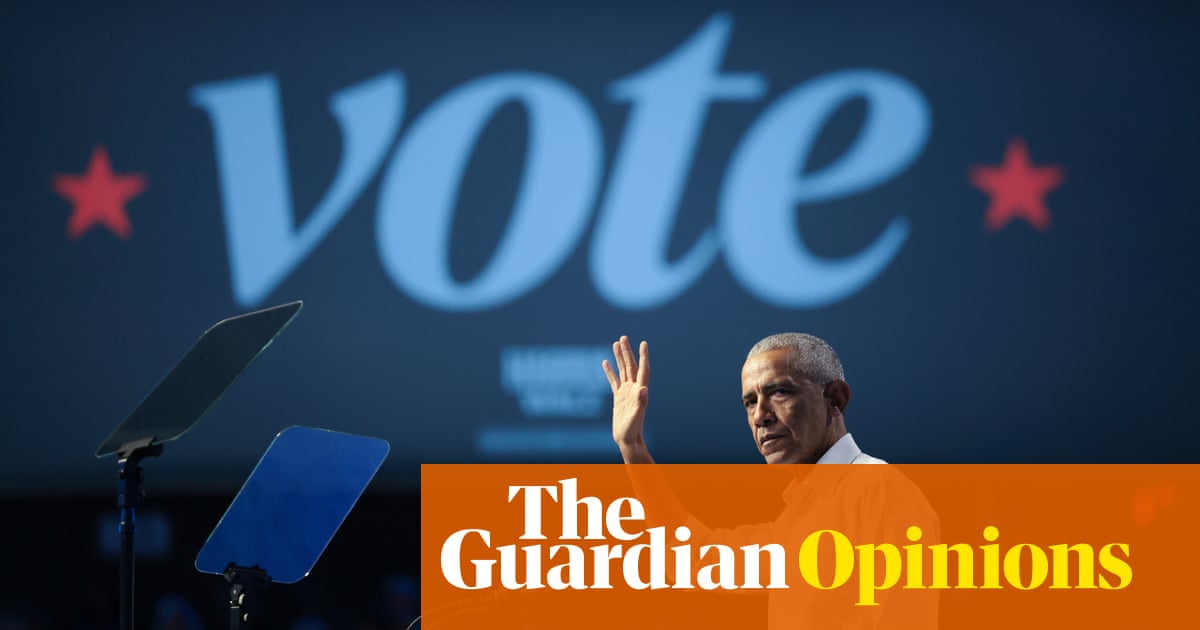I turned on MSNBC after the election results came in and this, verbatim, was the commentary I heard: “This really was a historic, flawlessly run campaign. She had Queen Latifah [who] never endorses anyone! She had every prominent celebrity voice, she had the Taylor Swifties, she had the Beyhive. You could not run a better campaign in that short period of time.” Democrats, it seems, are already blaming their defeat this week on a host of contingent factors and not on their own shortcomings.
It’s, of course, true that inflation has hurt incumbents across the world. But that doesn’t mean that there was nothing that Joe Biden could have done to address the problem. He could have rolled out anti-price-gouging measures early, pushed taxes on corporate super profits and more. Through well-designed legislation and the right messaging, inflation could have been both mitigated and explained. That’s what president Andrés Manuel López Obrador offered his supporters in Mexico and his governing coalition enjoyed commanding support.
However, more than policy, Americans craved a villain. An incompetent communicator in old age, Biden couldn’t provide one. He couldn’t grandstand about hauling profiteers in front of Congress or taking on billionaires. He couldn’t use his bully pulpit effectively to tout his successes creating good manufacturing jobs or put America’s inflation (and GDP growth) in global context. He couldn’t do much of anything.
As a result, 45% of voters, the highest number in decades, said they were financially worse off than they were four years ago. These people weren’t misled by the media, they were lamenting what’s obvious to everyone who lives in the United States: the soaring costs of groceries, housing, childcare and healthcare are both distributional and supply problems that the government has not tackled with urgency.
Donald Trump, for his part, ran a less than impressive campaign. He wasn’t as coherent as he was in 2016 when he more frequently spoke to the economic grievances and personal experiences of ordinary workers. In a less populist mood, Trump felt comfortable enough to openly pander to unpopular billionaires like Elon Musk.
As for Kamala Harris, her problem began all the way in 2020 when she was selected on identitarian grounds as a vice-presidential candidate despite performing terribly in the Democratic primaries. At a debate in March 2020, Biden pledged he would nominate a woman as vice-president. A host of influential NGOs then urged him to pick a Black woman. From the beginning, Harris was a choice driven more by optics than merits.
Harris had an uphill battle from the start. She was forced to govern alongside an increasingly senile president and given poison-pill assignments like a role as “border czar”. Biden’s belated departure from a race he couldn’t win meant Harris didn’t have the legitimacy afforded by an open primary, a primary that if conducted early enough might have yielded a stronger candidate like the Georgia senator Raphael Warnock.
Once given the reins of the party, the vice-president ran a campaign that was in both style and substance – like today’s Democratic party as a whole – driven by the professional class. Weakly populist ads targeted to swing states sat uneasily with attempts to make the race about abortion rights or Trump’s contempt for democracy. There was no unifying economic message that blamed elites for the country’s problems and laid out a credible vision of change. People knew that Harris was not Trump, but they didn’t know what she was going to do to solve their problems. She had the burden of incumbency without its benefits.
Harris was smart enough to not overemphasize her own personal story and how historic her victory would have been. But the Democrats as a whole were still associated with the identitarian rhetoric and an emphasis on anti-discrimination over class-based redistribution that drove Harris’s selection as vice-president to begin with. Many of us sounded the alarm early about the prominence of efforts like White Women: Answer the Call and Asian American, Native Hawaiian and Pacific Islanders for Kamala that focused on mobilization through skin color and gender instead of shared class interest. But a party increasingly divorced from workers ran with the activist base that it had rather than the voting base it needed to have.
The result was a staggering shift in working-class support across demographics. Exit polls suggest that Harris lost 16 points with “voters of color” with no degree compared with Biden, with particularly sharp losses among Latinos. The abortion emphasis didn’t pan out either – Biden led among those who believed that abortion should be “legal in most cases” by 38 points. Harris appears to have tied Trump with those voters.
In the lead-up to the 2016 election, Senator Chuck Schumer infamously argued: “For every blue-collar Democrat we lose in western Pennsylvania, we will pick up two moderate Republicans in the suburbs in Philadelphia, and you can repeat that in Ohio and Illinois and Wisconsin.” Without a New Deal–sized economic vision with a unified working class at the center, the Democrats have seen that calculation fail for the second time in eight years.
-
Bhaskar Sunkara is the president of the Nation, founding editor of Jacobin and author of The Socialist Manifesto: The Case for Radical Politics in an Era of Extreme Inequalities

 German (DE)
German (DE)  English (US)
English (US)  Spanish (ES)
Spanish (ES)  French (FR)
French (FR)  Hindi (IN)
Hindi (IN)  Italian (IT)
Italian (IT)  Russian (RU)
Russian (RU)  2 hours ago
2 hours ago
























Comments